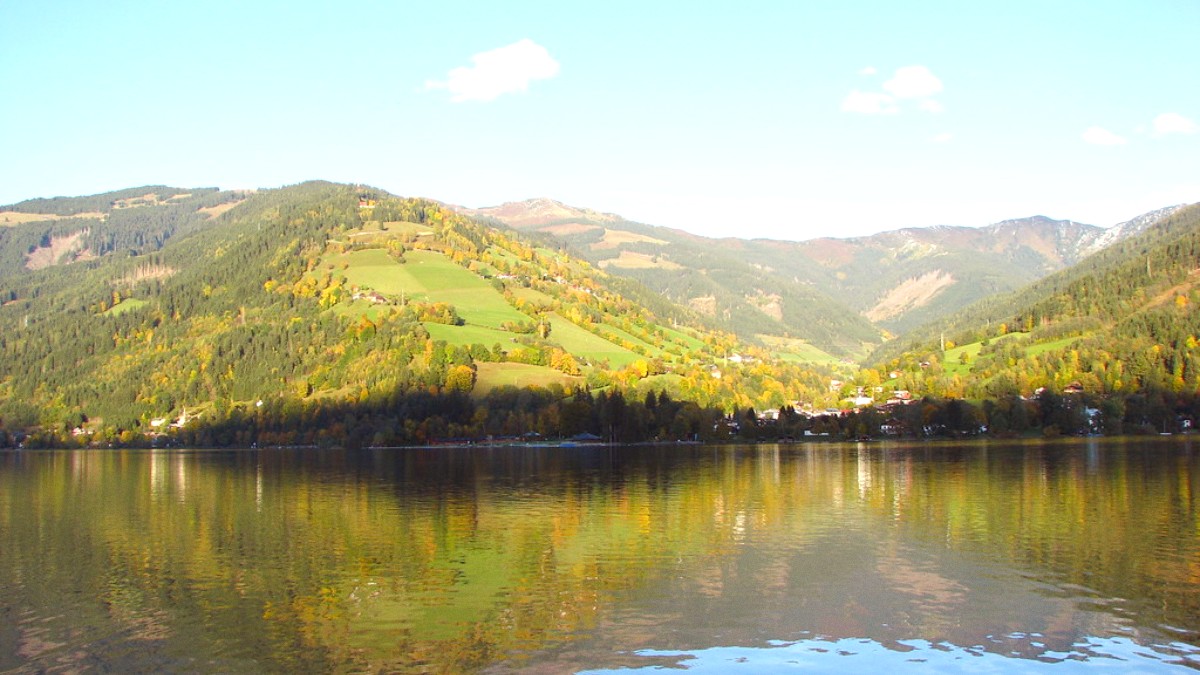
Austria
Winter (December - March): Expect cold temperatures and significant snowfall. Average temperatures generally range from -5°C to 5°C (23°F to 41°F). This period is good for winter sports, with crisp air and abundant snow cover transforming the landscape into a winter wonderland. Days are shorter, but the festive atmosphere, especially around holidays, holds appeal.
Spring (April - May): Spring brings a gradual thaw, with temperatures rising from 5°C to 15°C (41°F to 59°F). Snow begins to melt in lower elevations, displaying fresh greenery. This season can have variable weather, including sunny days, rain, and even late snowfall in the mountains. This time period can see some lifts and businesses closing for maintenance before the summer season.
Mountainous regions like Zell am See can experience rapid weather changes. Always make preparations for varying conditions, even within a single day. A sunny morning can quickly turn into a cloudy, cooler afternoon with rain.
For activities in high-altitude areas, like the Kitzsteinhorn Glacier, expect colder temperatures and the possibility of snow year-round, even in summer. Layered clothing remains a practical approach to handle these shifts.
Winter (Dec-Mar) & Summer (Jul-Aug)
Guaranteed snow (winter), Lake activities (summer), Lively atmosphere.
Highest prices, Crowded slopes and town, Advance booking necessary.
Late Spring (May-Jun) & Early Autumn (Sep-Oct)
Fewer crowds, Lower accommodation prices, Pleasant temperatures for activities, Beautiful scenery.
Limited operating hours for some lifts/attractions, Unpredictable weather, specifically in spring.
April, Early May, Late Oct, Nov
Lowest prices for accommodation, Very quiet atmosphere, Minimal tourists for a peaceful escape.
Many businesses closed for breaks, Limited activity options, Least predictable weather (often gray/rainy).
Skiing/Snowboarding: Prime season runs from December to March. On the Kitzsteinhorn glacier, skiing conditions extend until early summer, an unique year-round option for snow enthusiasts.
Hiking/Cycling: June to September offers the most favorable conditions for exploring the extensive network of trails and bike paths. Water Sports (swimming, paddleboarding, boat tours on Lake Zell): July and August provide the warmest lake temperatures.
May to October: Most pleasant conditions for town walks, attractions, outdoor cafes.
Mid-September to Mid-October: Spectacular changing colors across the mountainsides.
Late April to May: Early spring brings fresh greenery and blossoms to lower elevations.
Shoulder Seasons: Late spring and early autumn bring more relaxed atmosphere and lower prices.
December-January: Christmas and New Year offer a lively atmosphere and decorated town.
Prices vary significantly based on travel style and season. This overview details what to expect.
Approx. €50 - €90 ($55 - $100 USD) per day. This excludes international flights.
Approx. €100 - €200 ($110 - $220 USD) per day. This excludes international flights.
These are general price ranges. Prices fluctuate based on season, demand, and specific choices.
| Item | Category | Price Range (EUR) |
|---|---|---|
| Hostel/Guesthouse | Accommodation | €25 - €60 |
| 3-star Hotel/Apartment | Accommodation | €80 - €180 |
| 4-5 star Hotel | Accommodation | €180 - €500+ |
Your well-being holds main standing when traveling.
Ensure Measles-Mumps-Rubella (MMR), Diphtheria-Tetanus-Pertussis, Varicella (chickenpox), Polio, and annual Flu shots are up-to-date.
Vaccination against TBE is good for individuals planning significant time outdoors in wooded or grassy areas (spring/summer).
Visit your healthcare provider or a travel clinic well before your trip for personalized recommendations.
Prevention is simpler than treatment.
Altitude Sickness: Mild symptoms (headaches, nausea, dizziness) occur at higher elevations like Kitzsteinhorn glacier (over 3,000m). Stay hydrated, avoid excessive alcohol upon arrival at higher altitudes.
Sunburn: UV exposure rises at higher altitudes, even on cloudy days or with snow reflection. Use High-SPF sunscreen, wear protective clothing, and sunglasses year-round.
Cold/Flu: Common in winter. Practice good hand hygiene, use Hand sanitizer, avoid close contact with ill people.
Austria boasts a high standard of medical care. Accessing healthcare in Zell am See is straightforward.
Krankenhaus Zell am See (Paracelsusstraße 8) is the main local hospital. Pharmacies ("Apotheke") offer prescriptions and over-the-counter remedies.
European Emergency: 112 (general). Police: 133. Fire Department: 122. Ambulance: 144. Mountain Rescue (Alpinnotruf): 140.
Zell am See is a very safe destination with low crime rates. Serious crime is rare.
Austria maintains high standards of food hygiene.
Tap water in Zell am See is safe to drink and of excellent quality. Refill your Reusable water bottle freely.
Eating at restaurants, cafes, or purchasing food from supermarkets is generally safe. Exercise typical common sense.
Concern about foodborne illness remains minimal due to high standards.